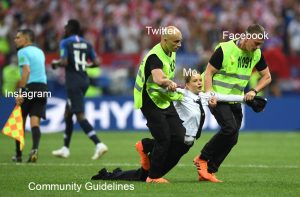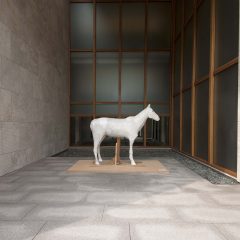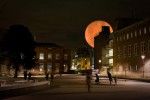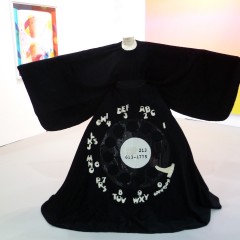It’s young! It’s New! And Jesus, some of it is really pretty good–but not all of it. The New Museum exhibit The Generational: Younger than Jesus, the show of Gen Y Millenials and the first of what’s billed as a triennial roundup of what’s young and hot in art, is more about the show itself–a quickie soundbite txtng to the world how the internet and technology have changed art in light of the change in humanity’s self-view in a cyberworld where time and reality are radically different from the past.
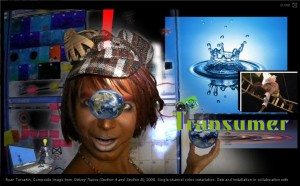
Videos were big. Photos were big. Installation was big. Although there was some drawing and painting, they were an unusually small presence in this exhibit of 50 artists from around the world, selected from a group of 500 recommended by 150 art world informants (curators, critics and artists) from hither and yon.
On the video front, Ryan Trecartin beat up on everyone, creating its own world with a demented logic that looks a lot like the world as we know it. This is the first time I was able to hear any of the dialog, and the content turns out to be about how systems–politics, the economy, the artworld, the cyberworld–work. The words themselves, like the characters, are self-absorbed reincarnations of pop culture sources–from news reports to reality shows to YouTube videos. The visuals are riveting in Trecartin, with lurid color in face paint and costumes and sets that bring up visions of Star Trek, Airplane, John Waters and Divine and our gang putting on a show.
The soap opera caricatures, which embody the Look At Me culture of Facebook, YouTube and MySpace as they pontificate and screech and dash and gyrate around the sets, also embody the hysteria and highjinx of in-your-face trans-gender vogue culture.
You don’t even have to go to New York to see Trecartin. These videos are at the Fabric Workshop and Museum right now. The installation here is its own trash-elegant affair, but the movies are the same, and the sound is even better. Don’t miss it.
Faye Driscoll, Loneliness, 2006, video. To see this, rotate your monitor or your head :).
Simpler, but successful in capturing the lovelorn drama of zillions of online YouTube videos and MTV music videos in a single gesture is Faye Driscoll’s Loneliness–a woman (the artist) wrapped in a green plastic tablecloth, dancing to a manic, percussive sound track. But the video is composed of a series of still photos–a video flip. This one also scored high on the Look At Me meter.
In stark contrast (a zero on the Look At Me meter, but a 100 on the thoughtfulness scale), a video by Patricia Esquivias, The Future was when? contemplates time and place and the ironies of life’s coincidences. This video is mostly not a video at all, but rather a shaggy dog of a narration with some visual aids. I am reminded of Janet Cardiff in the tone, the use of voice over, and the concerns of memory and time. There is not a hint of the cyberworld in this one (at least in the piece of it I saw), and yet it stands up and shines as an experience and a world all its own.
Another video of interest, Dineo Seshee Bopape’s zombie ritual in a contemporary tropical, mirrored installation, seems exotic–a reminder that art and performance meanings can be multi-layered and come in many stripes. And the video we saw at Vox last month–Tanagram, by Anna Molska, was also in this show!
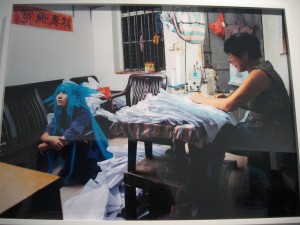
Speaking of performance, in Cao Fei’s manipulated photographs from the “COSPlayers” series, Chinese costumed role-players at home with their parents or in a field full of flowers raises questions about the real and comfortable just as it raises questions about the failure to grapple with reality by role playing. The confrontation between these two realities brought into one space is disturbing.
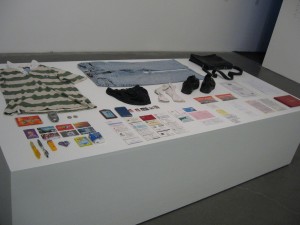
Also from China, Liu Chuang, in his installation Buying Everything on You, buys all the clothes and possessions worn by a person and arrays each person’s things in a museum-like display on plinths in the gallery. I was particularly struck by the number of identity cards in the Huangwei array, and by the makeup in Liu Zhe’s possessions, which also included a sanitary pad! These were poignant and vulnerable portraits of people. The layout inverts the possessions from trophies to an impoverished collection of just stuff.
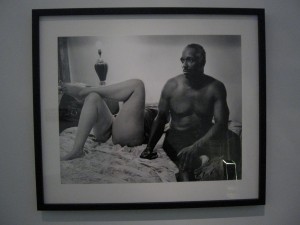
Photos from LaToya Ruby Frazier, a Pittsburgh photographer, are the opposite of Look At Me culture. They are not performances but rather real world portraits of herself and her family that suggest frictions and love and values and family culture all intertwined.
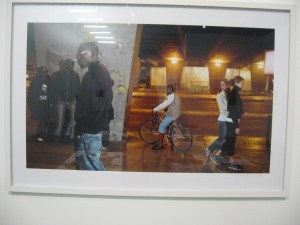
And Mohamed Bourouissa’s beautiful documentary photos capture the edginess of the other-ness of Africans living in France.
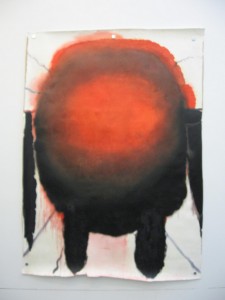
Beautiful drawings–oil on paper–by Kerstin Bratsch give a sense of the Big Brother oppression of modern society and the internet, using sometimes Constructivist means.
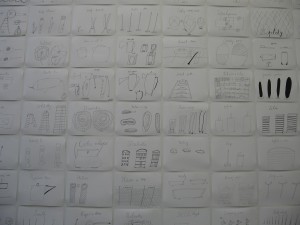
And Katerina Seda’s grandmother’s drawings of products from an home supplies store where she had worked also communicated an oppressiveness–a corporate oppressiveness, counterbalanced only somewhat by the personal story of the relationship of artist and grandmother.
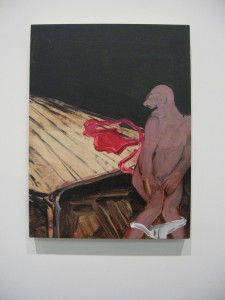
Tala Madani’s oils of men in somewhat demeaning situations are anti-heroic and anti-macho, and suggest a culture that has not yet succumbed to big box stores. In Madani’s work the oppressors have a human face, and it’s male, and painting is the antidote. How refreshing!
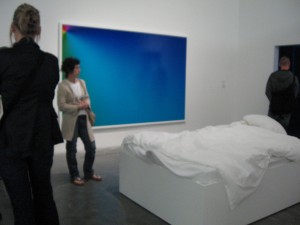
Some of the show, however, was a bit like cyberspace, with not much there there. (Of course, the Whitney Biennial often feels that way too. And surely this was no worse. It was even a bit more coherent). Take Cory Arcangel’s big blue screen of a print. It was so deep in its own emptiness that people were oblivious to it as they stared at a real, sleeping young woman on a bed in the gallery. The performer in Chu Yun’s This is XX was drugged with a sleeping pill–is this ethical? The reality of the vulnerable, sleeping woman overwhelmed the one-note gesture of cyber vacuousness, so I nearly backed right into Arcangel’s print.
I had to compare Chu Yun’s insertion of this woman, a beautiful creature on a bed draped in beautiful white bedding (it made me think of white marble Pietas), to Susanna Gieske’s family dinner invading the middle of the Ice Box, here in Philadelphia. Gieske won the comparison hands down–riskier, more complex, more surprising.
While I enjoyed the show, and think there’s plenty to find in it, all in all, I could have been in Philadelphia.


